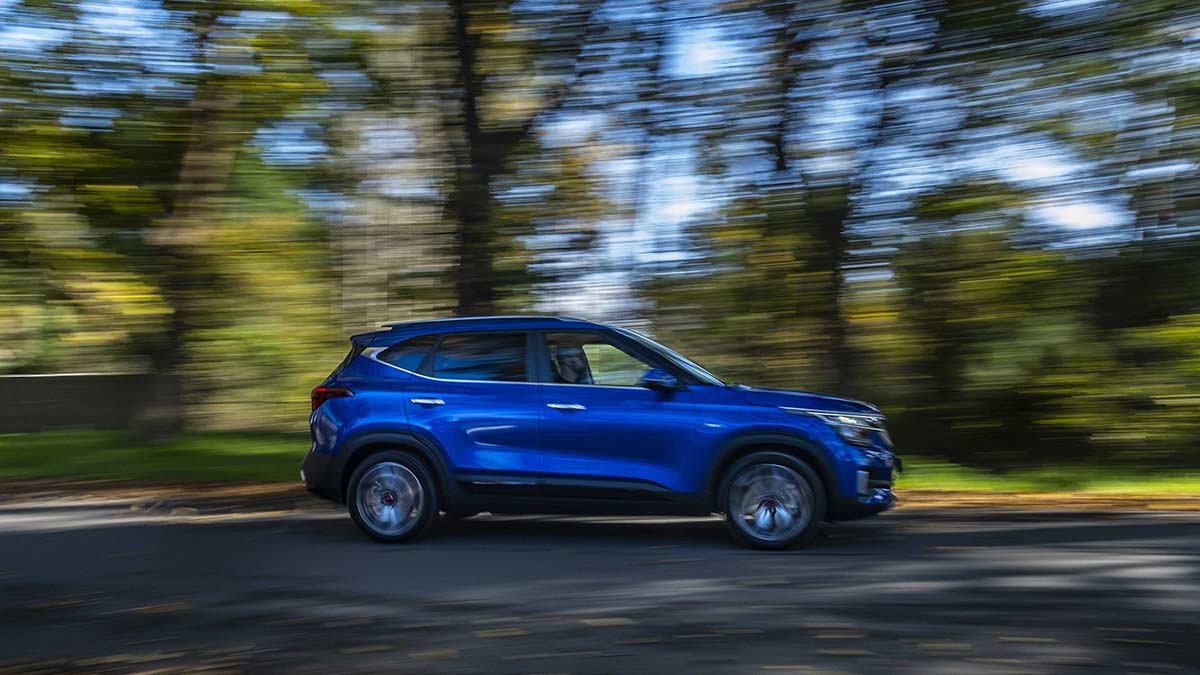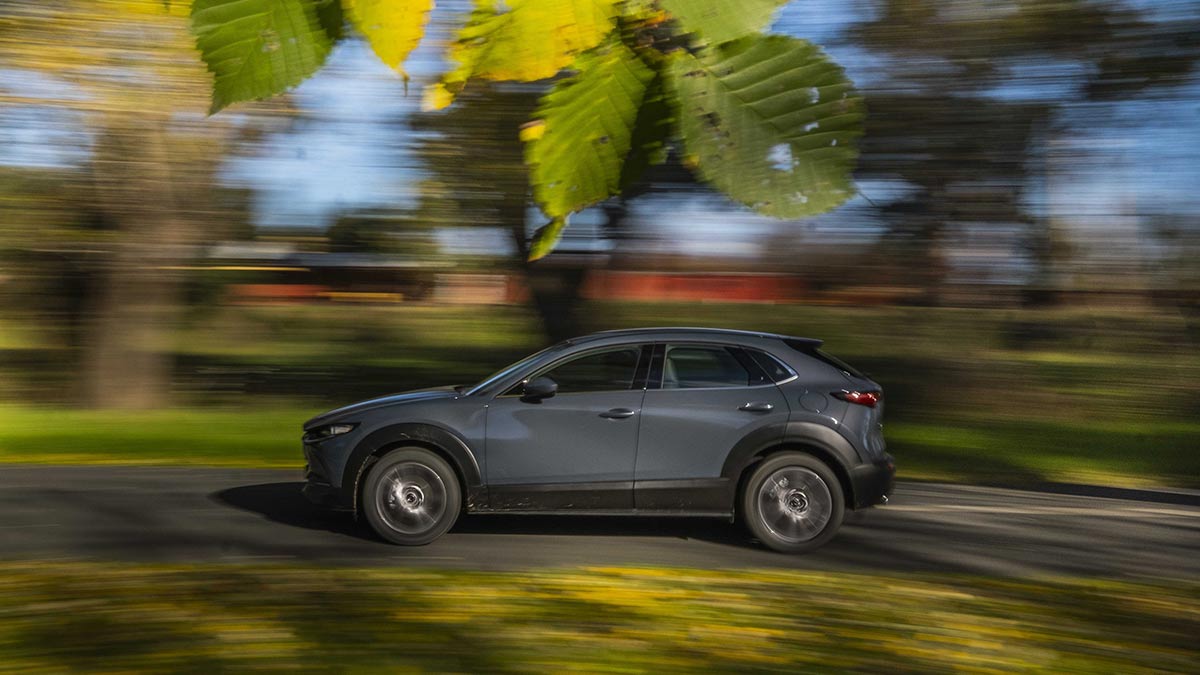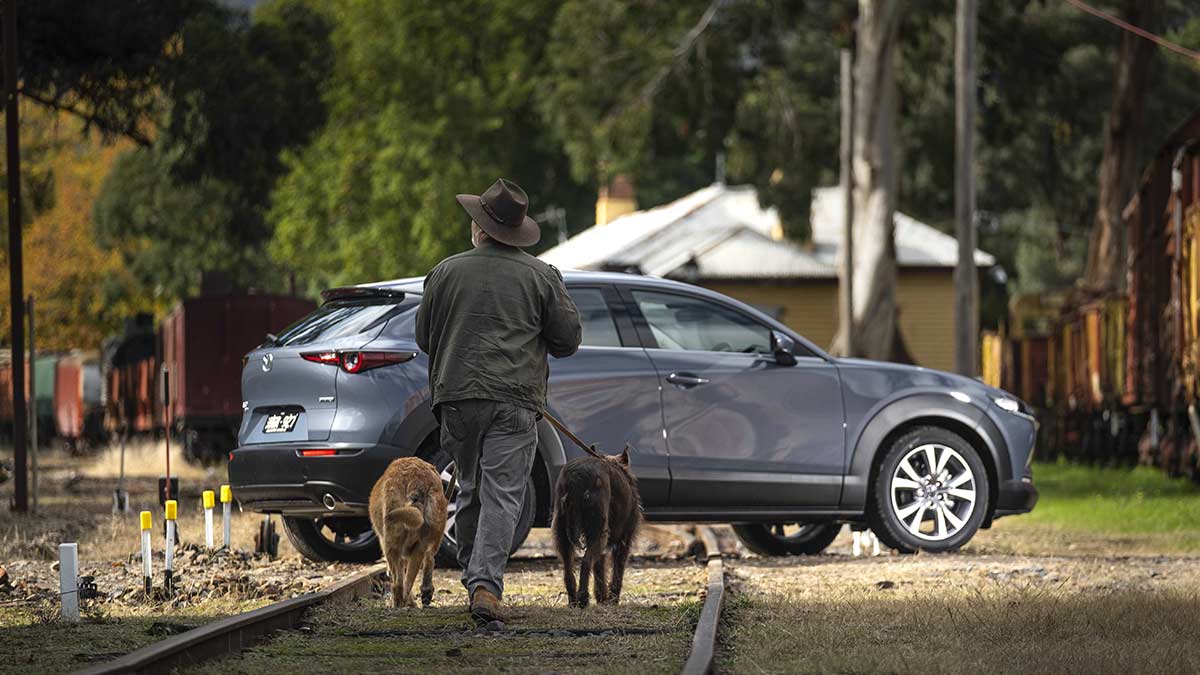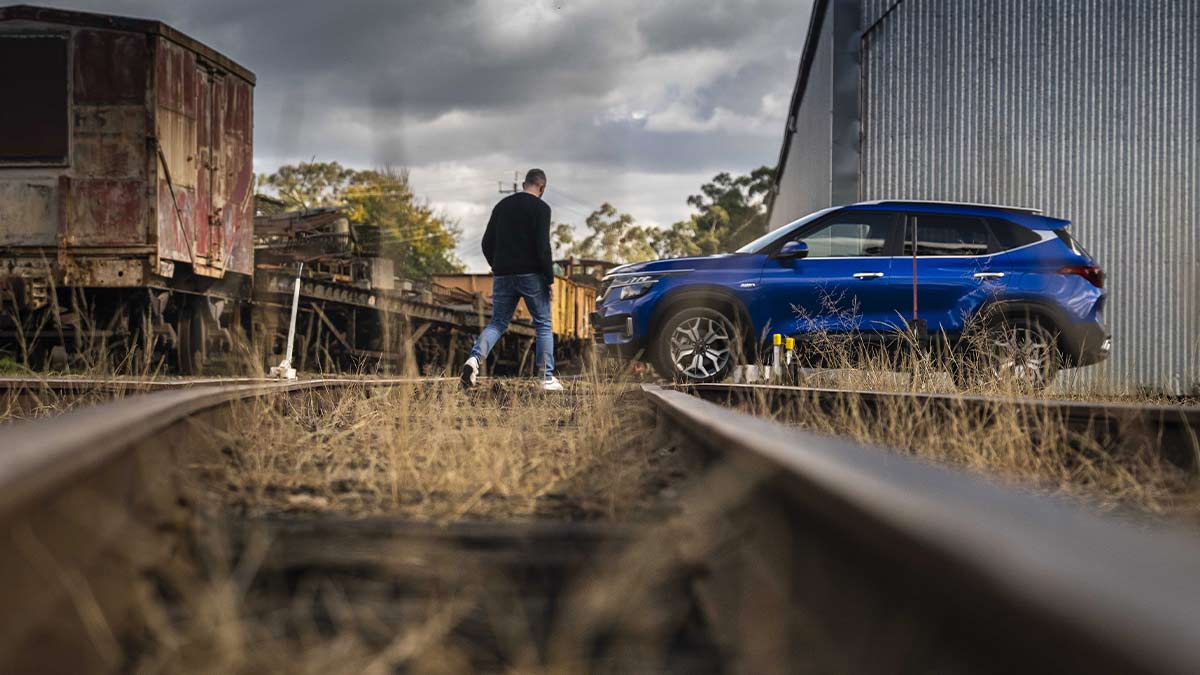The Foton Tunland joins Australia's dual-cab ute market as an affordable mild-hybrid diesel under $50,000, offering strong capability against tough competition.
Kia Seltos v Mazda CX-30 comparison test

We put two contenders in the surging compact SUV market head-to-head.
Kia made quite the splash in 2019 with the October launch of its new Seltos small SUV, quickly outselling established rivals and claiming the 2019 Australia’s Best Cars award for best small SUV under $40,000.
Just months later, Mazda filled an SUV-shaped gap in its line-up with the CX-30. Given it’s based on the excellent Mazda3, the CX-30 was always going to impress, but can it topple the category-winning Seltos in our comparison test?
Kia Seltos
Thumbs up: Interior comfort, value, dynamics.
Thumbs down: Noisy cabin, rough acceleration.
Mazda CX-30
Thumbs up: Ride and handling, stunning cabin.
Thumbs down: Can’t quite match Kia for value.
Let’s start with value for money. The Kia Seltos kicks off at $26,290 before on-road costs and tops out at $41,700 for the GT-Line. Entry-level variants use a 2.0-litre naturally aspirated petrol engine, while the Sport+ and flagship GT-Line use a 1.6-litre turbo. The CX-30 ranges from $28,990 to $46,490 before on-road costs and comes with a 2.0 or 2.5-litre naturally aspirated petrol engine.
We pitched the Seltos GT-Line against the CX-30 G25 Touring – both with all-wheel drive and auto transmissions. The Seltos came without options fitted, while the CX-30 added floor mats ($195) and premium paint ($495) for a $39,180 price tag. The GT-Line has a similar level of kit to the top-spec CX-30 Astina which is nearly $2500 more than the Seltos, but wasn’t available to test. The CX-30 Touring misses out on heated seats, wireless phone charging and some active safety features that are standard on the Kia.
Despite the Mazda’s 25-millimetre-longer wheelbase, the Kia’s second row has more leg and head room and feels airier. The CX-30’s lower roofline means taller folk need to duck when getting in and out of the back seat.
Kia’s interior is top notch – we love the edgy speaker pattern on the doors – but it can’t match the Mazda’s superb minimalism. The Kia’s lovely leather steering wheel has clear controls, and storage is decent throughout.
While the sliding-screen head-up display in the Seltos is dated, the top-notch infotainment system is typical of Kia and Hyundai models – simple to navigate, clear menu options and appealing graphics. The Mazda’s infotainment system is simple to use with clean graphics, while the head-up display is modern and all controls are clear.
For seating comfort and quality these two run neck and neck, offering decent levels of support with full electric adjustment. In back, both SUVs have a space-saver spare wheel under the boot floor, but Kia’s 433-litre boot trounces the Mazda’s 317 litres. The Seltos could do with better cabin insulation, while very little noise penetrates the Mazda’s cabin.
On the road, the two SUVs reveal very different characteristics. The Kia uses a 130kW/265Nm 1.6-litre turbocharged petrol engine and while it’s quick off the mark, the seven-speed dual-clutch transmission produces clunky gear shifts, making for jolty acceleration from a standing start. Higher up the rev range it smooths out and the engine shows it’s a willing unit, pulling away quickly. Flicking to Sports mode adds extra fizz to the Seltos’ performance.
The Mazda’s 139kW/252Nm 2.5-litre naturally aspirated engine isn’t as responsive as the Kia’s, but the performance is more linear. It comes alive when you’re up and running, making overtaking a breeze. The six-speed automatic transmission is so slick you barely notice the gear shifts and the stop-start system is seamless.
The smooth, uncomplicated powertrain ensures the CX-30 is the most polished performer in its segment. The 2.5-litre engine is the pick over the underdone 2.0-litre. There’s more lateral movement when cornering in the Kia, but it handles better than most small SUVs, and it loses some ground when it comes to ride quality – on uneven roads the ride is busy and you feel every pothole.
On the same pockmarked roads in the Mazda, you can still feel the corrugations, but it’s far more composed. The suspension is tuned for comfort but delivers on dynamic performance. The CX-30 glides through tight bends, remaining flat on twisty roads. On a brief section of unsealed road, the Kia’s ESC kicked in a little late and there was a lot of vibration through the steering wheel, while the Mazda exhibited more control and lacked that vibration.
Our fuel figures were recorded after a back-road drive and would likely come down around town or in freeway driving. The Kia ended up on 11.8 litres per 100 kilometres – well up on the official claim of 7.6 litres – while the Mazda recorded 9.9L/100km, up on its 6.8-litre claim.
The verdict
The Kia and Mazda are well matched in so many areas, but while the Seltos is better value, the CX-30 is a brilliant everyday car that compromises on nothing, and therefore takes the win.
|
Price |
List price: $41,100 before on-road costs. |
List price: $38,490 before on-road costs. |
|---|---|---|
|
Drivetrain |
1.6-litre four-cylinder turbo petrol engine, seven-speed dual-clutch automatic transmission, all-wheel drive. |
2.5-litre four-cylinder petrol engine, six-speed automatic transmission, all-wheel drive. |
|
Fuel |
91 RON petrol, 50-litre tank. |
91 RON petrol, 48-litre tank. |
|
Standard safety |
Autonomous emergency braking with pedestrian and cyclist detection, lane-keep and lane-follow assist, adaptive cruise control, rear cross-traffic alert, front and rear parking sensors, five-star ANCAP rating. |
Autonomous emergency braking front and rear, blind-spot monitoring, driver-attention alert, lane-departure warning, lane-keep assist, rear cross-traffic alert, adaptive cruise control, rear parking sensors, five-star ANCAP safety rating. |
|
Standard features |
Head-up display, wireless phone charging, 7.0-inch colour instrument cluster, 10.25-inch colour touchscreen with sat-nav, Bluetooth, DAB digital radio, Apple CarPlay/Android Auto, eight-speaker Bose audio system. |
Auto-dimming rear-view mirror, black leather trim, 10-way power-adjustable driver’s seat, 8.8-inch colour touchscreen with sat-nav, DAB+ digital radio, Bluetooth, Apple CarPlay/Android Auto. |
|
Warranty/servicing |
Seven-year/unlimited kilometre warranty, seven-year capped-price servicing plan, service intervals of 10,000 kilometres or 12 months. |
Five-year/unlimited-kilometre warranty, five-year capped-price servicing plan, service intervals of 10,000 kilometres or 12 months. |






